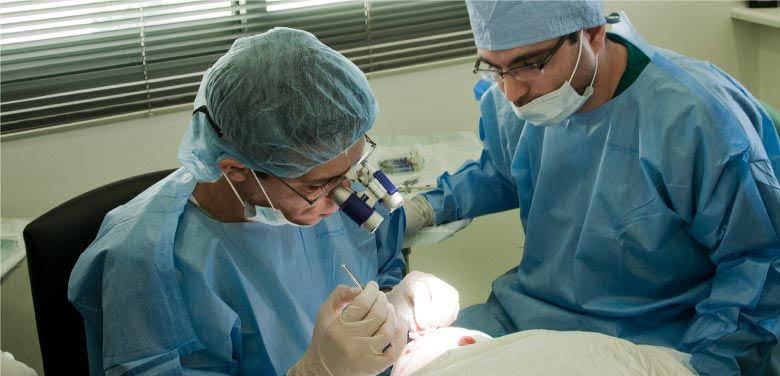Hair Restoration and Transplant Training
The aesthetics industry is seeing an ever growing number of areas of the face and body that can be improved with low-invasive treatments. Hair loss is possibly one of the most distressing signs of ageing so it is no wonder that a procedure becoming so heavily in demand is hair restoration. Advancing technology and improved skills means that people are experiencing truly amazing results with little risk, discomfort or down time.
The Demand
The number of hair transplants conducted globally are predicted to grow by almost 24% from 2022 to 2028, with the global market estimated to be worth $53.18 billions US dollars by 2028 (see here). This has been driven by advances in surgical procedures and instruments as well as a huge increase in public awareness of hair transplants with many high profile celebrities having the procedure such as Wayne Rooney (England footballer), Ben Stokes (England cricketer), Sam Smith (singer) and many more.
The term “restoration” is given to the consumer need to treat balding areas of the scalp and it can also apply to the face such as beards and eyebrows. In the research to “cure” balding in both men and women many approaches have been explored from hormonal therapies to topical lotions, to stitching (or knitting) dead hair, to surgery. The latter option offers the safest and most reliable solution to long term, natural looking hair.
The Terms
If you are considering training in this area of aesthetics you will need to get a full understanding of the different types of restoration or transplant procedures and what is the best option for your patient’s hair loss problem.
Background on the Two Main Procedures
The two main procedures that are emerging as the most successful are Follicular Unit Extraction (FUE) and Follicular Unit Transplant (FUT). They are both essentially a form of transplant from existing hair follicles but there are significant differences. The most important factor in both methods is keeping the hair follicle unit healthy and intact.
FUE takes singular or small clusters of follicles from an area of strong healthy hair which is then prepared for transplant in the balding area. This process requires superb skills by the surgeon and can even be conducted by doctor-directed robotics technology.
FUT involves the removal of an area of skin with a crop of healthy hair. Also known as a graft, this harvesting-style method is similar to laying grass turfs for an even lawn. The downside to this practice is the risk of scarring.
What both practitioners and patients are finding so effective about these two ways of hair restoration is that the hair follicles behave as they would have in their previous location. This means that the results are long lasting and they may not experience repeated hair loss in the recovered area until they become very old or their genetic chances are complete and rapid balding at a young age.
Why MATA
At Medical and Aesthetics Training (MATA), we will train you in the theory behind both FUE and FUT procedures with practical hands on experience in FUE. Our training standards and government-aligned courses are designed to educate and equip you with all elements of practicing in this field of aesthetics. As a healthcare professional your qualifications, experience and skills are perfectly suited to learning and running a successful hair transplant practice. At MATA we understand this and wish to match your current expertise with commercial opportunities via reliable, gold-standard training programmes. Our hair transplant training is a unique, standalone training course and has been designed to compliment our wider programme of training and Ofqual regulated qualifications we have been offering since 2015.
Who is the Course for?
All healthcare professionals trained and qualified to Level 6 in a medical degree are ideal candidates for the course and in order to be eligible for module two you must be a GMC registered doctor currently.
Career
Your career will benefit from training and qualifying in this area, and you might wish to consider HRS as an area of expertise by focusing most of your practice’s procedures on this type of treatment. The research on consumer demand is showing how the demand for these newer and highly successful methods to treat hair loss will bring business opportunities for qualified and skill health care professionals. Around 40% of males experiencing noticeable hair loss by age 35 you can see how the demand is rising. Whether you are already practicing in the aesthetics industry or considering a move away from public or essential health care this new world of hair restoration looks set to be a very promising path.
Training Course Details
COURSE FRAMEWORK
The course has been designed to build the foundation on this seven step framework:
- Patient selection – patient assessment
- Project surgery – plan which surgery the patient needs
- Anaesthetic technique
- Extraction technique
- Gestation of the graft – are the grafts viable or not? Recognise how much hair there is in one graft
- Implantation technique:
- Implanter
- Forceps
- Aftercare process with the patient:
- Cleaning
- Medication
- Therapy
- How to navigate complications
- Follow up
There is a maximum of three delegates per course so this is a very specialised and exclusive training. The courses are running on a monthly basis and spaces go quickly so we strongly recommend booking as soon as you can to secure your spot.
MODULE 1 (Perugia, Italy): Foundation Training for Hair Transplant Surgery
UK and International qualified doctors are eligible for Module 1
This 3 day module is broken into one theory day and one practical day. Hosted at a state of the art hair transplant medical facility in Perugia, Italy and run by a leading hair transplant specialist, delegates will experience the following:
- Day 1: This theoretical day introduces you to the overall theory and techniques. Delegates acquire fundamental knowledge using learning materials such as handouts, audio visuals etc. Tutor lectures are followed by interactive discussions where delegates can ask the tutor questions .
- Day 2 & 3: These practical days are dedicated to direct observation and live demonstrations of the procedures covered during the theoretical day. You will observe one patient per day being treated by our leading hair transplant specialist.

MODULE 2 (London/Manchester, UK): Advanced Training for Hair Transplant Surgery
Currently open to doctors with UK GMC registration only.
This three day module is dedicated to hands on practical training in Follicular Unit Exctraction (FUE) Technique. The training is conducted in a state of the art medical facility with full CQC registration under the supervision of our leading hair transplant surgeon.
- Each day there is one patient model who is provided by MATA
- You will practice all the elements need to conduct a successful hair transplant under supervision our leading hair transplant surgeon
- On each day, you will treat up to 100 grafts per patient and observe your fellow delegates doing the same. You will get personalised feedback and instructions as our leading hair transplant surgeon is there to ensure you deliver exceptional patient results as you perfect your technique
- You will receive a completed observation sheet to demonstrate the training you received and commentary from our leading hair transplant surgeon
Course Outcomes
When you have completed by modules of our world leading training course, you will have gained the following:
- 6 days total training with our global expert hair transplant surgeon
- 3 days practical, hands on training treating live patients
- Observation sheet
- Course certificate
- 40 CPD points

